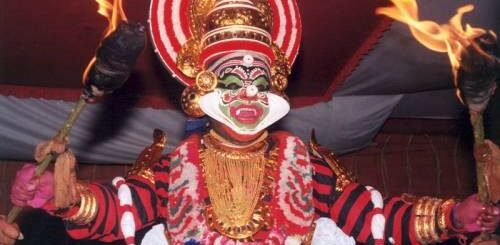National Current Affairs – UPSC/IASExams – 8th May 2019
Fall armyworm
Topic: Environment and Ecology
In News: Agriculture scientists and environmentalists predict that the deadly pest, fall armyworm (FAW), could turn out to be a scourge for farmers in former undivided Adilabad district in the coming crop seasons.
More on the Topic:
- The pestilence, which had primarily attacked maize crop in Nirmal and Adilabad districts, had damaged crop to the extent of 90% in some cases and is expected to attack even cotton and soyabean crops.
- The scientist also suggested sowing of treated maize seeds and inter-cropping with red gram and use of pheromone traps.
- In the last season agriculture scientists had deployed some methods of damage-control in maize crop which is cultivated in about 20,000 hectares in erstwhile Adilabad. One of the methods, suggested by Food and Agriculture Organisation, was the use of sand and lime mixture in the whorls of the maize plants.
About Fall Army Worm
- The fall armyworm is a species in the order of Lepidoptera and is the larval life stage of a fall armyworm moth. The term “armyworm” can refer to several species, often describing the large-scale invasive behavior of the species’ larval stage.
- It is regarded as a pest and can damage and destroy a wide variety of crops, which causes large economic damage.
Source: The Hindu
Arctic Council
Topic: International Affairs
In News: India has been re-elected as an observer to the Arctic Council.
More on the Topic:
- India was an Observer at the Council from 2013 onwards. Besides India, China, South Korea, Singapore, Italy and Japan also have Observer status at the Council.
- The Arctic Council is formed of Russia, the United States, Canada, Norway, Demark, Sweden, Iceland and Finland.
- The arctic council meeting convened recently. At the culmination, the member countries released a joint statement in which they pledged a number of measures to preserve the Arctic.
- Among the important decisions, they “reaffirmed their commitment to maintain peace, stability and constructive cooperation in the Arctic”.
- They also committed to the well-being of the Arctic’s inhabitants and the region’s sustainable development and the protection of its environment. Most importantly, the joint statement recognised the rights of Arctic indigenous peoples and to consult and cooperate with them.
Arctic Council working groups:
- Arctic Contaminants Action Program (ACAP):strengthening and supporting mechanism to encourage national actions to reduce emissions and other releases of pollutants.
- Arctic Monitoring and Assessment Programme (AMAP):monitors the Arctic environment, ecosystems and human populations, and provides scientific advice to support governments as they tackle pollution and adverse effects of climate change.
- Conservation of Arctic Flora and Fauna (CAFF):addresses the conservation of Arctic biodiversity, working to ensure the sustainability of the Arctic’s living resources.
- Emergency Prevention, Preparedness and Response (EPPR):protect the Arctic environment from the threat or impact of an accidental release of pollutants or radionuclides.
- Protection of the Arctic Marine Environment (PAME):protection and sustainable use of the Arctic marine environment.
- Sustainable Development Working Group (SDWG):works to advance sustainable development in the Arctic and to improve the conditions of Arctic communities as a whole
Source: The Hindu
Purple Frog
Topic: Environment and Ecology
In News: Purple frog could be soon designated as Kerala’s state amphibian. There is a proposal on this.
More on the topic:
- This purplish, puffy termite-eater with a blister for a nose is native to the Western Ghats of India and has apparently been around since the age of the dinosaurs.
- Its ancestors survived the splitting of the Earth – they were on Gondwanaland at one point, survived an ice age or two as well as the meteor that wiped out the dinosaurs and numerous earth-shattering quakes and volcanic eruptions.
- As weirdly unattractive as it looks, this creature is a survivor, and that’s deserving of anyone’s respect. But it’s now met its match.
- Already on the endangered species list, the Maveli frog – as it’s known in Kerala – is fast on its way to extinction.
Source: The Hindu
Red Cross and Red Crecent Day
Topic: International Organisations
In News: World Red Cross Day, also known as World Red Cross and Red Crescent Day which is observed every year on May 8 is a gentle nod to all the volunteers who have made unparalleled contribution to people in duress or need.
More on the Topic:
- The 2019 theme is ‘#Love’ and aims to broaden the public’s understanding of the society by highlighting the diversity and universality of its work and approach.
- The day is celebrated annually to reduce the suffering of people and enabling them to lead a dignified life. It is celebrated by Red Cross Organisations across the world by helping people with independence, humanity, impartiality, universality, unity and neutrality – the fundamental principles of the organisation.
International Red Cross and Red Crescent Movement:
- The International Red Cross and Red Crescent Movement is an international humanitarian movement with approximately 17 million volunteers, members and staff worldwide which was founded to protect human life and health, to ensure respect for all human beings, and to prevent and alleviate human suffering.
- The movement consists of several distinct organizations that are legally independent from each other, but are united within the movement through common basic principles, objectives, symbols, statutes and governing organisations. The movement’s parts are:
- The International Committee of the Red Cross (ICRC) is a private humanitarian institution founded in 1863 in Geneva, Switzerland, in particular by Henry Dunant and Gustave Moynier. Its 25-member committee has a unique authority under international humanitarian law to protect the life and dignity of the victims of international and internal armed conflicts. The ICRC was awarded the Nobel Peace Prize on three occasions (in 1917, 1944 and 1963).
- The International Federation of Red Cross and Red Crescent Societies (IFRC) was founded in 1919 and today it coordinates activities between the 190 National Red Cross and Red Crescent Societies within the Movement.
- National Red Cross and Red Crescent Societies exist in nearly every country in the world. Currently 190 National Societies are recognized by the ICRC and admitted as full members of the Federation. Each entity works in its home country according to the principles of international humanitarian law and the statutes of the international Movement.
Source:The Hindu
Black Lists of Indian-origin people
Topic: Polity and Governance
In News: The Home Ministry has done away with Black Lists of Indian-origin people, mostly Sikhs, who have taken asylum abroad under the plea of alleged persecution in India.
More on the Topic:
- All such people will also be given regular visa as well as Overseas Citizen of India cards. The Indian-origin asylees, were denied visa services by Indian missions and posts since they took asylum abroad under the plea of alleged persecution in India.
- It is maintained by Indian missions (Indian Embassies in different countries) and posts abroad.
Overseas Citizenship of India:
- The Overseas Citizenship of India (OCI) is an immigration status permitting a foreign citizen of Indian origin to live and work in the Republic of India indefinitely.
- The OCI was introduced in response to demands for dual citizenship by the Indian diaspora, particularly in developed countries.
- It was introduced by The Citizenship (Amendment) Act, 2005 in August 2005.
- The Constitution of India prevents Indian citizens from holding dual citizenship.As such the OCI is not actual citizenship of India according to Indian law as it has many limitations such as no right to vote, no right to hold constitutional offices, and no right to buy agricultural properties.
- To apply for and use an OCI document, a holder must be a citizen of and hold a passport of another country, except that of Pakistan and Bangladesh.
Source: The Hindu
Char Dham Yatra
Topic: Culture
In News: The world renowned and much awaited chardham yatra began in Uttrakhand.
More on the Topic:
- In the great Himalayas in Uttarakhand, the four pilgrim-destinations namely Yamunotri, Gangotri, Kedarnath and Badrinath are collectively known as Chardham.
- Traditionally, this pilgrimage tour should begin from the West and end in the East. Thus, the Char Dham Yatra commences from Yamunotri, then proceeding to Gangotri and finally to Kedarnath and Badrinath.
Each of these four sites is devoted to a specific deity:
- Yamunotri is dedicated to the Goddess ‘Yamuna’. Yamunotri stands high up in the deep left on the western face of the Bandarpunch Peak.
- Gangotri is dedicated to Goddess ‘Ganga’. The shrine overlooks the River Bhagirathi.
- Kedarnath is dedicated to Lord Shiva and is also a part of the Panch Kedar. It is the northern-most Jyotirlinga and is close to the source of the holy River Mandakini.
- Badrinath is dedicated to Lord Vishnu. It is situated on the bank of the River Alaknanda.
- In accordance with the Hindu conventions, thousands of devotees take up this pious tour in the hope to experience bliss and successfully purge their souls of all worldly demons.
Source: The Hindu



















